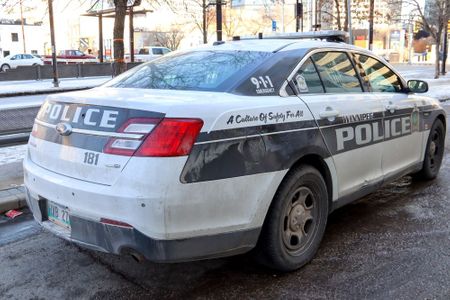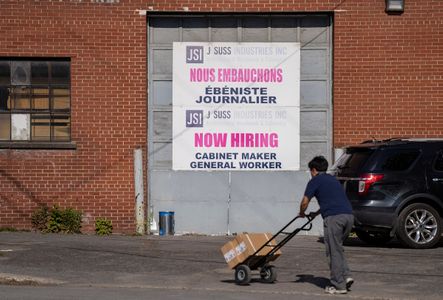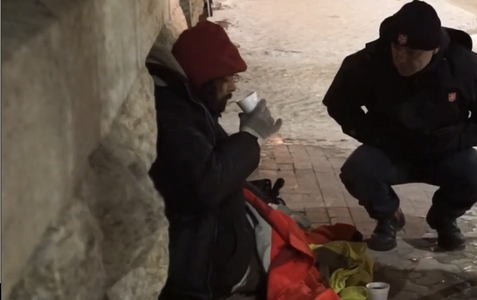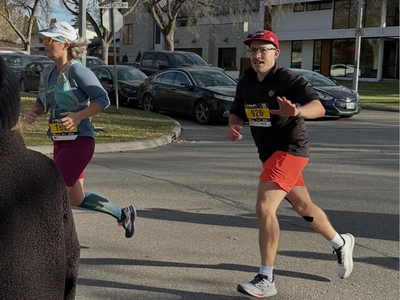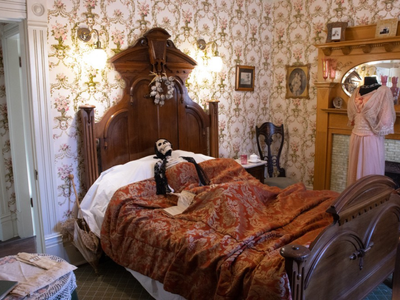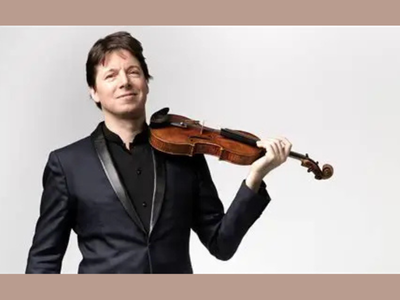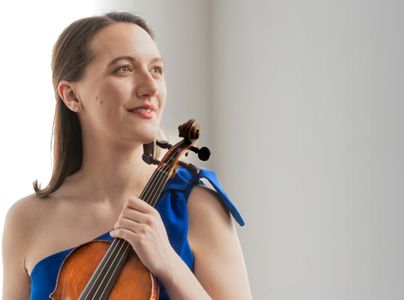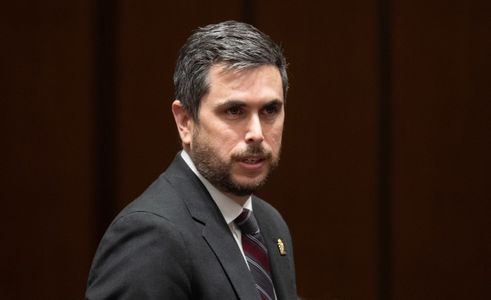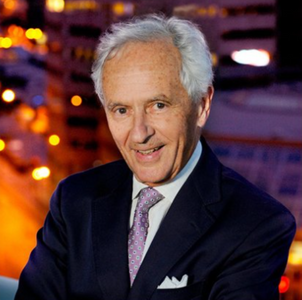Arts & Culture
Raphael Weinroth-Browne brings electrifying cello innovation to International Cello Festival of Canada
Two Cellos, Two Worlds: Raphael Weinroth-Browne brings boundless creativity to Winnipeg In a world where discovery is only a click away, our senses are constantly enriched by the sights and sounds of distant cultures. From Instagram scrolls to global streaming, boundaries between east and west, north and south are dissolving—and nowhere is that cultural fusion more alive than in music. .embed-container { position: relative; padding-bottom: 56.25%; height: 0; overflow: hidden; max-width: 100%; } .embed-container iframe, .embed-container object, .embed-container embed { position: absolute; top: 0; left: 0; width: 100%; height: 100%; } This spirit of connection will be at the heart of the International Cello Festival of Canada, where two fearless innovators—Austrian artist-composer Matthias Bartolomey and Canadian cellist-composer Raphael Weinroth-Browne—will take the stage. The duo will perform Two Cellos, Two Worlds: Beyond the Classics on October 28 at 4 p.m. at the Desautels Concert Hall, returning on October 30 at 7:30 p.m. for I’ve Got the World on a String with the Winnipeg Jazz Orchestra, and again on October 31 at 7:30 p.m. at St. John’s Anglican Church for the spine-tingling Halloween special Wood Shredding Cellists. These performances promise to be unlike anything you’ve heard. A thrilling collision of classical precision, global rhythms, and unbridled creativity that will leave audiences spellbound. Joining Chris Wolf over Zoom, Weinroth-Browne spoke about his genre-defying artistry, his musical upbringing, and what makes performing in Winnipeg so special. Growing up between Bach and Black Sabbath When asked about his fearless approach—blending classical cello with metal and Middle Eastern influences—Weinroth-Browne says it all felt completely natural. “I think it just felt natural to me, to be honest, because all of those things felt sort of like a familiar part of my environment,” he explains. “So yeah, my cello playing and my interest in metal and music from various parts of the world all sort of happened concurrently. So I think that the way that I play now and the type of music that I compose is just a sort of natural progression from the way I grew up and what I was exposed to.” Beyond the orchestra pit Weinroth-Browne’s career path has never followed a traditional orchestral route. While he has played in ensembles throughout his studies, he quickly realized that wasn’t where his creative spark thrived. “It just didn't feel like the right fit for me,” he says. “I played in orchestras growing up and in university and during my grad studies, and I played in orchestras also in a professional setting, but not a full-time position or anything. I never thought that I wanted to pursue that as my career.” He continues: “It kind of feels less about creativity and more about being able to execute very specific instructions based on score. And you're in an environment that, I guess it's not so much about having interesting sort of musical conversations or collaborations. It's more about sort of rendering this work. And you're one small part of an ensemble that does that.” Instead, his compass has led him toward collaborations with groups such as Leprous and Apocalyptica, and into solo work that uses pedals, looping, and effects to transform the cello into a one-person orchestra. “I'm just constantly hungry to move in new directions and to try things that I haven't seen before and haven't heard before,” he says. “And to surprise people, I think, as well… doing the thing that other cellists may not be doing also feels somehow right to me.” A global generation of sound As metal and other modern genres increasingly influence classical musicians, Weinroth-Browne believes this trend will only grow. “Most likely,” he says when asked if metal will become more prominent in classical music. “I think that every new generation has a more global awareness and understanding and acceptance of various forms of musical expression.” He points to technology and cultural exchange as major reasons for this evolution. “We’re just moving more and more into an awareness of everything that's out there. And it's for about having access to more music and more ideas and more perspectives and more cultures as well.” That exposure, he says, will inevitably shape how new composers create. “Every generation will probably see a greater confluence of these styles and perspectives,” he notes. “As a creative person, as a composer, you're always going to sort of channel what resonates most with you, whatever sort of frequency you happen to vibrate on.” Two cellists, one vision Weinroth-Browne first became aware of Bartolomey’s work in 2018 when both performed at the Cello Biennale Amsterdam, a major international festival. “Matthias is an incredible cellist and composer. I'm a big fan of his work, huge fan,” he recalls. “We both performed at the Cello Biennale Amsterdam… and the show that The Visit was playing was a double bill with Matthias's duo, Bartolomey Bitnan.” That initial admiration developed into a friendship that would eventually bring the two together on stage in Winnipeg. “It's really cool to compare notes with another string player that does something a bit non-traditional because there's so few opportunities for that,” Weinroth-Browne says. Their October 28 program will include Weinroth-Browne’s Triumvirate and Bartolomey’s LICHT, alongside solo works by both artists. Cello meets circuitry While Bartolomey’s music leans more acoustic, Weinroth-Browne’s sound world is distinctly electric. “Yeah, Matthias’s stuff is more based around an acoustic cello sound, but… with my stuff, there's a different sort of signal chain happening,” he explains. “I'm still using the acoustic sound, but I'm also plugging my cello into effects pedals and I'm also using a looper.” That experimentation led to an unexpected discovery: “One day when I was bored during a soundcheck, I realized that if I sort of knocked the pickup and then I flicked the bridge, that I could create this sort of like kick-snare type sound… and it just sounded like electronic drums.” These percussive techniques are now integral to his live looping performances. “You'll be able to see it all play out actually, which is kind of fun,” he adds. “It's kind of like a choreography with your feet a little bit… that’s as much part of the performance as the playing.” Strings meet swing On October 30, Weinroth-Browne and Bartolomey join fellow cellists Zander Howard Scott and Samuel Nadurak for I’ve Got the World on a String with the Winnipeg Jazz Orchestra—a concert that blends jazz and cello in new ways. “It's going to be pretty eclectic,” says Weinroth-Browne. “It's going to be a combination of pieces that are quite contemporary… and then some more traditional jazz stuff, including Rhapsody in Blue, actually, done on cello.” He’ll also perform selections from his new album Lifeblood reimagined as “these sort of cello concerto pieces.” “I think it's going to be maybe a singular occurrence,” he says. “You may never see that particular collaboration and that iteration of those pieces again.” Halloween with a cello army To cap off the festival, Weinroth-Browne joins the Wood Shredding Cellists concert on October 31, performing alongside members of the Winnipeg Symphony Orchestra and other featured artists. “Many things,” he laughs when asked what he’s most looking forward to. “I think it's going to be a really cool show… there's going to be some really amazing cellists, like some real heavy hitters.” Among the works featured is his own early composition, Aftermath, written when he was just 19. “It's sort of like the instrumental narrative to a post-apocalyptic landscape,” he says. “It has a lot of sadness and some very, yeah, sort of lamentation-based moments and other parts that are very rhythmically dynamic and extremely intricate.” A warm return to Winnipeg Weinroth-Browne last performed in the city during the 2024 Winnipeg New Music Festival and says he’s eager to return. “I really like the scene in Winnipeg, and I think that audiences are incredibly supportive,” he says. “I really felt that people were there for everything. They were just really receptive… people in Winnipeg really have made a choice to be there and to support what's happening in their city and to identify with it and take pride in it.” That connection, he adds, makes performing in Winnipeg special. “It's a nice chance to be there for an extended period and play lots of shows and be very immersed. So yeah, I'm excited.” For fans of the cello — or anyone who loves to be swept away by raw, unfiltered musical emotion — these performances promise something truly extraordinary. Raphael Weinroth-Browne and Matthias Bartolomey are redefining what the cello can do, moving effortlessly between classical mastery, improvisation, and sheer, heart-pounding energy. Expect virtuosic playing, electrifying rhythms, and moments of breathtaking intimacy that remind you why live music matters. Whether you’re a die-hard classical fan or simply craving a one-of-a-kind concert experience, these are shows that will leave you absolutely spellbound. Festival details Two Cellos, Two Worlds: Beyond the Classics 📅 October 28 at 4 p.m. – Desautels Concert Hall I’ve Got the World on a String (with the Winnipeg Jazz Orchestra) 📅 October 30 at 7:30 p.m. – Desautels Concert Hall Wood Shredding Cellists (Halloween concert) 📅 October 31 at 7:30 p.m. – St. John’s Anglican Church For tickets and details, visit International Cello Festival of Canada.


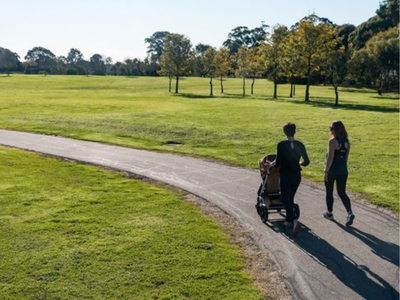

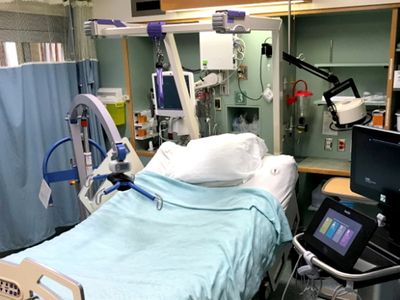


Thu, Oct 16, 7:00 PM
Fri, Oct 17, 8:00 PM
Sat, Oct 18, 9:00 AM
Sat, Oct 18, 9:30 AM
Sat, Oct 18, 10:00 AM
Full-time, Hourly, Permanent, Professionals, Skilled Trades
Featured
Full-time, Permanent, Agriculture, Transport
Full-time, Term, Administrative
Full-time, Term, Education
Full-time, Professionals











